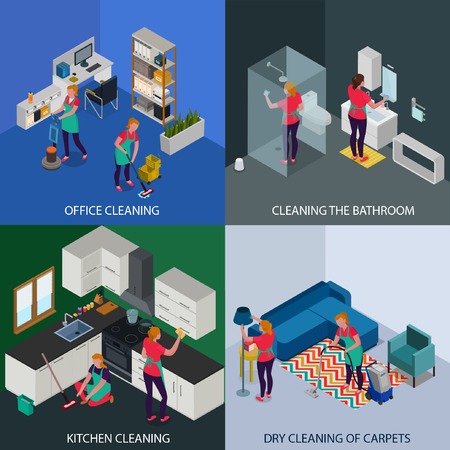Introduction: Tile Installation in American Homes
Tile has become a staple in American home design, gracing kitchens, bathrooms, and even living spaces with its durability and timeless appeal. Whether you’re drawn to the sleek look of subway tiles or the earthy charm of natural stone, tiles offer endless possibilities for personalizing your home. As more homeowners seek ways to refresh their interiors, one big question often comes up: Should you tackle tile installation as a DIY project, or is it better to call in the professionals? The answer isn’t always straightforward—each approach has its own benefits and challenges. In this article, we’ll explore what you need to know before making that decision, helping you create a beautiful space that fits both your style and your lifestyle.
Pros and Cons of DIY Tile Installation
If youre considering a tile project, doing it yourself can be both exciting and budget-friendly. Many homeowners in the U.S. are drawn to DIY tile installation because it offers significant cost savings and puts you in the driver’s seat when it comes to creative choices. Let’s break down what makes the DIY route appealing—and where you might run into some bumps along the way.
What Makes DIY Tile Installation Appealing?
| Advantage | Description |
|---|---|
| Cost Savings | You can save money on labor by handling the installation yourself, which is especially helpful for large projects or tight budgets. |
| Creative Control | From tile selection to layout patterns, every decision is yours—making it easier to create a unique look that fits your style and home. |
| Flexible Schedule | You set your own pace and timeline, so you don’t have to work around a contractor’s calendar. |
Common Challenges of DIY Tile Installation
| Challenge | Description |
|---|---|
| Skill Level Required | Laying tile is harder than it looks. Achieving professional-looking results often requires experience with measuring, cutting, and setting tiles properly. |
| Time Commitment | Tiling can be time-consuming—especially if you’re learning as you go. Projects often take longer than expected for first-timers. |
| Tools & Equipment | You may need to invest in or rent specialized tools like tile cutters, spacers, and levels, which adds to your overall project cost. |
| Potential Mistakes | Mistakes can lead to uneven surfaces or wasted materials. Fixing errors may require starting over or calling in a professional anyway. |
Is DIY Right for You?
If you love hands-on projects and have some basic skills, DIY tile installation can be rewarding—and kind to your wallet. However, think carefully about the time, effort, and patience required before jumping in. Weighing these pros and cons will help you decide whether rolling up your sleeves or calling a pro is the best fit for your next tile job.

3. Professional Tile Installation: What to Expect
Choosing professional tile installation brings a range of benefits that go beyond just getting the job done. First and foremost, professionals offer expertise honed by years of experience, ensuring your tiles are placed correctly, evenly, and with attention to detail that’s tough for DIYers to match. Many installers are familiar with the latest trends and sustainable materials, giving you guidance on eco-friendly options and designs that fit your home’s aesthetic.
Time is another key factor—professional crews work efficiently, often completing projects in days rather than weeks. This means less disruption for your household and more time enjoying your updated space. Plus, many companies offer warranties on both materials and labor, providing peace of mind if any issues arise down the road. If something isn’t right, you have a clear path to resolution without extra out-of-pocket costs.
As for costs, American homeowners can expect to pay anywhere from $5 to $15 per square foot for standard ceramic or porcelain tile installation, depending on region and complexity. More intricate patterns, specialty tiles, or eco-conscious upgrades like recycled glass or natural stone may increase prices. While this investment is higher than a DIY approach up front, it often pays off in lasting quality and fewer headaches over time.
4. Environmental Impact: Eco-Friendly Practices
When it comes to tile installation, whether you go the DIY route or hire a professional, making eco-friendly choices can significantly reduce your project’s environmental footprint. Both approaches offer opportunities for sustainability if you know what to look for and how to plan responsibly.
Sustainable Tile Materials
Choosing environmentally responsible materials is a great first step. Tiles made from recycled content, like glass or porcelain, as well as natural stones sourced from ethical quarries, are becoming more accessible across the U.S. market. Additionally, manufacturers are increasingly offering tiles certified by organizations such as GreenGuard or LEED for low emissions and sustainable practices.
| Tile Type | Sustainability Features | Typical Uses |
|---|---|---|
| Recycled Glass Tile | High recycled content, low VOCs | Kitchens, bathrooms, accent walls |
| Porcelain with Recycled Content | Durable, often contains post-industrial waste | Floors, high-traffic areas |
| Bamboo/Cork Tiles | Rapidly renewable resources | Walls, backsplashes |
| Natural Stone (locally sourced) | Minimal processing if quarried nearby | Floors, patios, countertops |
Eco-Friendly Installation Options
The installation process is another area where you can prioritize sustainability. Some adhesives and grouts contain chemicals that release volatile organic compounds (VOCs). Look for low-VOC or zero-VOC products to maintain healthy indoor air quality. Additionally, using underlayments made from recycled rubber or cork can further minimize environmental impact.
Reducing Waste: DIY vs. Professional Approaches
DIYers: Planning tile layouts carefully and measuring precisely can help you purchase only what you need, minimizing leftover material. Saving any extra tiles for future repairs instead of discarding them also reduces waste.
Professionals: Experienced installers are often adept at optimizing material usage and recycling old tiles or packaging responsibly. Many pros will also recommend eco-conscious disposal methods for demo debris.
Tips for Making Eco-Conscious Choices:
- Buy local materials when possible to reduce transportation emissions.
- Select durable tile options to avoid frequent replacements.
- Recycle or donate unused tiles instead of sending them to the landfill.
- If hiring a pro, ask about their green building practices and certifications.
Ultimately, whether DIY or professional, being mindful of your material choices and installation process ensures your new tile surface doesn’t just look good—it does good for the environment too.
5. Safety, Tools, and Skills Needed
If you’re considering tackling tile installation yourself, it’s important to be prepared with the right tools, safety gear, and skills before getting started. Let’s break down what DIYers need, and how professional installers manage more complex challenges.
Essential Tools for DIY Tile Installation
For a standard DIY tile project, you’ll need some basic tools: a tape measure, level, notched trowel, tile cutter or wet saw, grout float, sponges, buckets, and safety goggles. It’s also smart to have knee pads and gloves to protect your body during the process. Don’t forget about tile spacers for even lines!
Safety Tips Every DIYer Should Follow
Tile work can get messy and sharp edges are common. Always wear eye protection when cutting tiles and gloves to avoid cuts. Make sure your workspace is well-ventilated when using adhesives or grout, and keep your area clean to prevent slips or trips. If you’re removing old tiles, consider wearing a dust mask—old mortar can stir up fine particles.
How Professionals Handle Tough Situations
Pros come equipped with specialized tools like high-powered wet saws and laser levels for perfect alignment. More importantly, they know how to address tricky situations that often stump DIYers—like dealing with moldy subfloors or uneven surfaces. Instead of simply covering up issues, professionals inspect the underlying structure for moisture damage or rot, treating or replacing materials as needed. For uneven floors or walls, they use leveling compounds or backer boards to create a smooth foundation before laying any tile.
When Skills Make All the Difference
While patience and attention to detail go a long way in DIY projects, experience matters when unexpected problems arise. Professional installers have seen it all—they know how to identify potential trouble spots before they become bigger issues and ensure your installation will stand the test of time.
The Bottom Line
If you’re confident with your tools and safety practices—and your project is straightforward—a DIY approach can be rewarding. But for jobs involving structural repairs, mold remediation, or seriously uneven surfaces, calling in a pro is often the safer (and more sustainable) choice.
6. How to Decide: Is DIY or Professional Right for You?
Choosing between a DIY tile installation and hiring a professional can feel overwhelming, especially with all the variables involved. To help you make an informed decision that fits your unique situation, here’s a straightforward checklist of key questions and considerations tailored for homeowners in the US.
Budget
What is your total budget for this project?
If you’re working with a tight budget, DIY might save you on labor costs, but remember to factor in tool rental or purchase, supplies, and potential repairs from mistakes. Professional installers cost more upfront, but their experience can minimize expensive errors.
Timeline
How quickly do you need the job done?
Professionals typically complete projects faster thanks to expertise and the right tools. DIY lets you work at your own pace, but could stretch out over weekends or even months if you have a busy schedule.
Skill Level & Experience
Have you completed similar home improvement projects before?
Tiling demands precision—from surface prep to cutting tiles and grouting. If you’re new to this kind of work, consider starting with a small area. For large or complex patterns (like herringbone or mosaic), hiring a pro may ensure better results.
Project Complexity
Is your space straightforward or does it have tricky corners, curves, or obstacles?
Kitchens and bathrooms often have cabinets, pipes, or uneven surfaces that complicate installations. Pros handle these challenges daily; for DIYers, complicated layouts can mean unexpected headaches.
Project Goals & Expectations
What matters most: saving money, learning new skills, or having a flawless finish?
If you love hands-on projects and don’t mind imperfections, DIY can be rewarding. If your priority is resale value or long-term durability, professional work may be worth the investment.
Quick Decision Checklist:
- Do I have (or am willing to learn) the necessary skills?
- Can I dedicate enough time without rushing?
- Does my budget comfortably cover either route—including surprises?
- Will mistakes impact my family’s comfort or my home’s value?
No matter which path you choose, weighing these factors ensures your tile project supports both your lifestyle and your home’s beauty—while keeping stress (and waste) to a minimum.
7. Conclusion: Making the Best Choice for Your Home
When it comes to tile installation, there’s no one-size-fits-all answer. Whether you’re drawn to the hands-on satisfaction of a DIY project or you value the expertise and efficiency of professional installation, your decision should reflect what matters most to you. If cost savings are your top priority, rolling up your sleeves and doing it yourself might be the way to go—just remember to factor in your time and the learning curve. If long-term durability, flawless results, and less stress are important to you, hiring a pro could be worth every penny.
Sustainability is another key consideration. Sourcing eco-friendly materials and minimizing waste—whether on your own or through a green-certified contractor—can help reduce your home’s environmental impact. Whichever route you choose, take time to research, ask questions, and prioritize what aligns with your lifestyle and values.
Your home is an expression of who you are. By making an informed choice between DIY and professional tile installation, you can ensure that your space not only looks great but also feels right for you and your family—today and for years to come.


